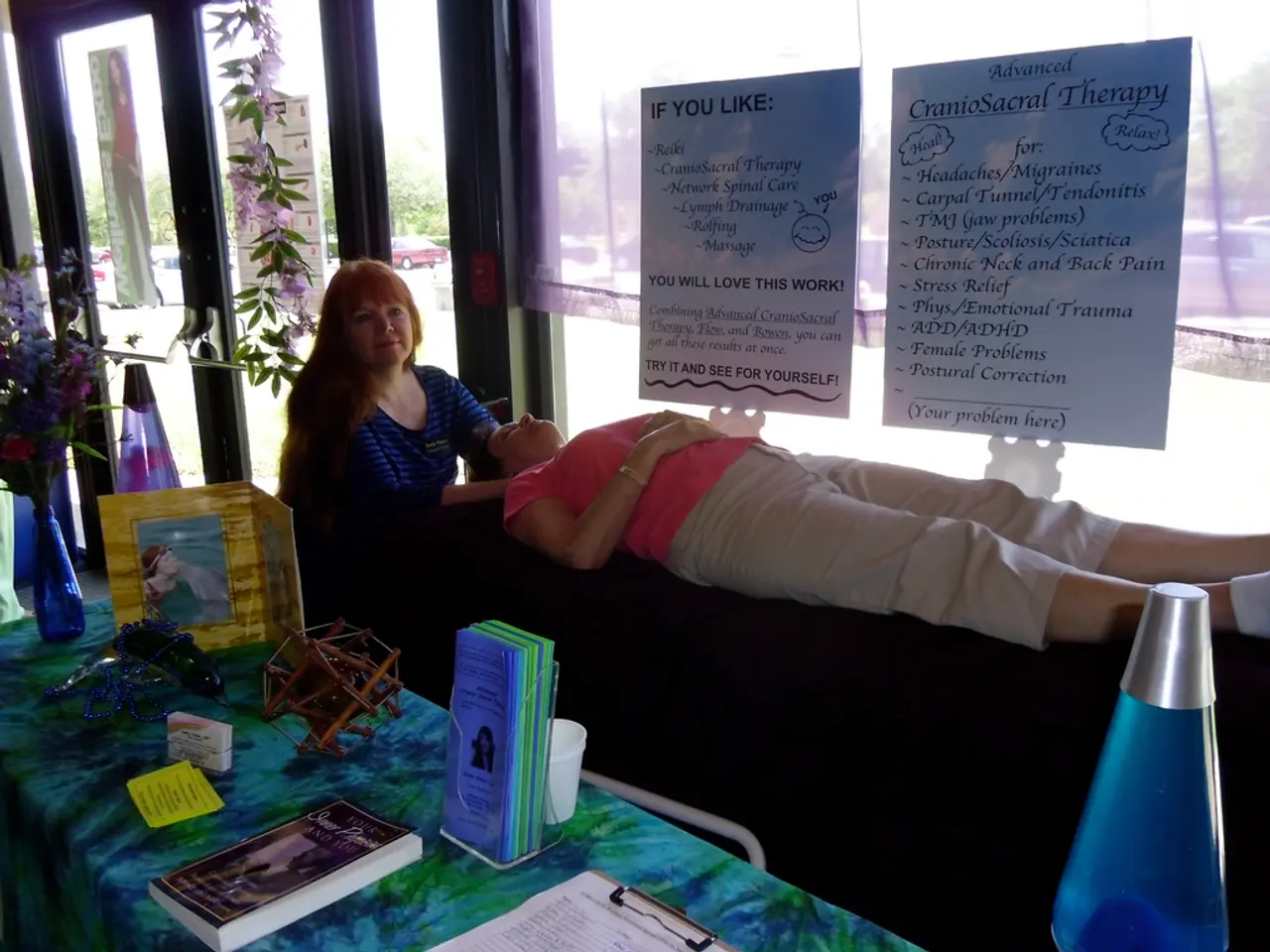Upside-Down Hanging: Advantages, Disadvantages, and Safety Measures
Inversion therapy, a method that involves hanging upside down or at an inverted angle to decompress the spine, is not currently recommended by the American College of Physicians (ACP) as a primary treatment for back pain relief.
The ACP, a leading organization for internal medicine physicians, states that there is a lack of clinical evidence to support the effectiveness of inversion therapy. This stance is based on the limited high-quality evidence on its efficacy and concerns about safety risks such as increased blood pressure, eye pressure, and falls, particularly in people with cardiovascular or glaucoma risks.
A small study suggested that inversion therapy may help reduce the need for surgery in some cases, but the study had limitations, and other studies did not find it significantly beneficial. The search results did not provide any current recommendations or statements from the ACP specifically regarding the effectiveness and safety of inversion therapy for back pain relief.
Safer, evidence-supported treatments include exercise, physical therapy, and other conservative approaches. It is always best for a person to discuss inversion therapy with a healthcare professional before attempting it.
Inversion therapy carries potential risks, such as severe spine injuries from falls, increased blood pressure, pressure behind the eyes, and increased intracranial pressure. People with high blood pressure, blood clots, glaucoma, obesity, heart disease, osteoporosis, injuries such as fractures, strains, or sprains, a history of stroke, and pregnant people should avoid inversion therapy.
Alternatives to inversion therapy for treating back pain include massage, acupuncture, yoga, transcutaneous electrical nerve stimulation, maintaining a healthy body mass index, getting regular physical activity, correcting posture, avoiding activities that worsen pain, using the correct technique to avoid strain when moving any heavy objects, wearing comfortable, supportive shoes, stretching daily, physical therapy, medication such as prescription pain relievers, anti-inflammatory medication, muscle relaxants, numbing injections, and surgery such as disc replacement surgery and spinal fusion.
When using an inversion table, it is crucial to carefully inspect the equipment before use, and use an inversion table with additional safety devices and double locks if possible. A person should hang upside down for less than 1 minute at a time and wait at least 1.5 minutes before the next inversion. If any pain, discomfort, or signs of complications, such as dizziness, headache, nosebleed, blood spots in the eyes, drowsiness, vomiting, changes in vision, light sensitivity, irregular breathing, slowed heart rate, feeling of pressure in the head or behind the eyes, weakness or numbness, sudden confusion, or any other unusual symptoms occur, the person should stop inversion therapy immediately.
For the most up-to-date ACP stance on back pain treatments, it is recommended to consult the ACP’s official clinical guidelines or position statements on back pain, as they periodically update these based on the latest systematic reviews and evidence.
Psoriasis, a chronic skin disease characterized by red, scaly patches, has been found to have a potential link with obesity and other inflammatory conditions such as hepatitis, ulcerative colitis, Crohn's disease, and mental-health issues. The science of health-and-wellness is continually exploring these connections, aiming to uncover predictive patterns and potential treatments.
The prediction of disease progression in these conditions can greatly benefit from practical applications of advanced technology, such as the Application of Quantitative Science to Predictive Medicine (AQ), which could revolutionize the diagnostic process and tailor treatments for individuals.
It's crucial to remember that maintaining a healthy lifestyle, including a balanced diet and regular exercise, is essential in managing these diseases and improving overall well-being. Consulting a healthcare provider to understand personal risk factors and proper treatment plans is always advisable.
On the other hand, while inversion therapy has shown some potential benefits for back pain, the American College of Physicians (ACP) does not currently recommend it as a primary treatment due to insufficient evidence and potential safety risks. Therefore, exploring alternative treatments for back pain, such as massage, acupuncture, yoga, and physical therapy, would be far more advisable.
Lastly, inversion therapy's potential risks, ranging from spine injuries to increased blood pressure, eye pressure, and intracranial pressure, make it inappropriate for people with various health conditions, including high blood pressure, heart disease, obesity, and a history of stroke, among others. It's always best to consult a healthcare professional before engaging in any unusual exercises or therapies.




